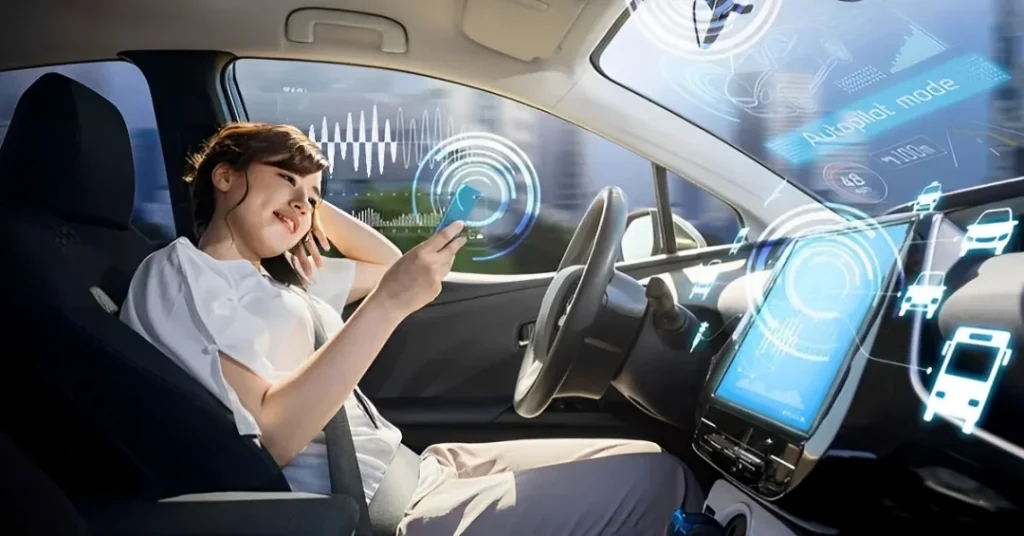
Overview
Imagine driving through Taipei’s busy streets, where the sound of blaring horns and conversation blends seamlessly with the buzz of technological advancement. Welcome to a new era of transportation, self-driving gharry.
These self-driving cars are no longer a pipe dream, they are becoming an essential element of urban life in this thriving city. As Taipei adopts technology, residents and visitors may expect a more convenient, efficient, and safe way to navigate the city’s busy roads.
With continued investment and research, Taipei can become a leader in autonomous transport solutions. This not only enhances local travel but also sets a benchmark for other cities globally.
Embracing such changes opens doors to new opportunities, fostering economic growth and improving quality of life for residents and visitors alike. The road ahead is promising, filled with potential that could reshape everyday experiences on the go.
Let’s take a look at how these self-driving gharrys are changing the way people travel in Taiwan!
The Rise of Autonomous Vehicles in Taipei
Taipei opens its arms to the future, and the forefront of this change comes with autonomous vehicles. It has turned into a testing ground for new solutions in transport that promise to change the way people move.
Government initiatives and private investments are pushing the development of self-driving technology. This collaboration is done in a way to create seamless integration between traditional transportation systems and new-age autonomy.
The urban landscape provides a series of challenges for those vehicles that vary in opportunities. Located in Taipei, where the traffic patterns and users are dynamic, it finds an ideal platform for its application in reality.
The benefits have begun to be realized by the residents, from less congestion on the roads to increased safety features on busy streets. People want to know exactly what it means to them in everyday commutes as more automated technology progresses, hence the reason Taipei is leading from the front as far as smart mobility solutions in Asia are concerned.

Benefits of Self-Driving Gharry
Self-driving gharry presents a transformative shift in urban transportation. These autonomous vehicles can significantly reduce traffic congestion by optimizing routes and managing multiple passengers.
Safety is paramount. With advanced sensors and AI-driven technology, self-driving gharry minimizes human error, which is the leading cause of accidents. Passengers can feel more secure while navigating Taipei’s bustling streets.
Environmental benefits are also notable. Many self-driving gharry are electric or hybrid models, contributing to lower emissions and reduced air pollution in the city.
Also, accessibility improves. People with mobility challenges can travel more freely and independently without relying on traditional taxis or public transportation thanks to these innovative transportation alternatives.
Furthermore, travelers can make better use of their trip time, whether it’s for work or enjoyment. This convenience enhances the appeal of this growing mode of transportation.
The Statesman and the NYT Crossword
Challenges and Solutions in Implementing Self-Driving Gharry
Implementing self-driving gharry in Taipei presents various challenges. One major issue is the intricate road conditions, which include narrow streets and heavy pedestrian traffic. Navigating these complexities requires advanced technology and precise algorithms.
Another significant hurdle is public perception. Many people remain skeptical about autonomous vehicles’ safety and reliability. Building trust through education and successful pilot programs can help alleviate these concerns.
Regulatory frameworks also pose a challenge. Current laws may not fully accommodate self-driving technology. Collaborating with government agencies to create clear regulations will be essential for smooth integration.
Moreover, infrastructure must evolve to support this innovation. Upgrading road signage, developing dedicated lanes, and enhancing connectivity between vehicles are necessary steps toward achieving efficiency.
Engaging local communities throughout this process fosters understanding and acceptance of the new technology while encouraging feedback that could lead to further improvements.

The Future of Self-Driving Gharry in Taipei
The future looks bright for the self-driving gharry in Taipei, and technology is still evolving. The autonomous vehicle is increasingly subtle, integrating an advanced AI and machine learning system that raises the bar ever high for safety and efficiency.
This could develop into the autonomous automobile, gharrys, of the future for urban transportation at an increasingly rising need, hence, they may replace Taipei’s public transportation systems altogether.
Just think of a fleet seamlessly working across the city, offering a greener alternative to commuters. Tech companies and local governments will have to partner in this new future. Collaboration can be better infrastructure, smart traffic lights, lanes dedicated to autonomous vehicles.
Public acceptance is another vital aspect. As residents experience the benefits firsthand like reduced congestion and lower emissions the demand for self-driving gharry services may surge.
Innovations like ride-sharing integrations could also emerge, creating an interconnected network of mobility solutions throughout Taipei. This evolution promises exciting changes ahead for both residents and visitors alike.
Conclusion
The evolution of transportation in Taipei is witnessing an exciting transformation. The introduction of self-driving gharry holds immense potential for the city’s future mobility landscape. This innovation isn’t just about convenience, it represents a shift towards smarter urban living. Imagine navigating through bustling streets without the stress of traffic or parking woes. As technology advances, so does our understanding of how to implement these vehicles safely and efficiently. Community engagement will play a crucial role in this journey.
FAQs
How does the technology behind taipei self-driving gharrys work?
The technology is based on sensors, cameras, and complex algorithms. These systems enable the vehicle to monitor its surroundings, make real-time judgments, and safely navigate metropolitan streets.
Are self-driving gharrys safe?
Safety is very crucial with self-driving cars. These cars must be taken for hard testing by manufacturers in different environments so that they could securely share the road with human-operated cars.
What benefits do taipei self-driving gharrys offer compared to traditional transport methods?
Self-driving gharrys reduce traffic congestion by optimizing routes and improving traffic flow. They also lower operational costs over time, as they don’t require drivers’ salaries and may have improved fuel efficiency.
Can I use taipei self-driving gharry services right now?
While there are ongoing pilot programs testing their feasibility in Taipei, widespread availability might still be some years away. Keep an eye on local news for updates regarding service launches.
Will using a self-driving gharry change my commuting experience?
Using a ghary is likely to transform your daily commute into something more enjoyable. Passengers can relax or engage in activities like reading or socializing while the vehicle navigates itself through busy streets.
How does the implementation of these vehicles address environmental concerns?
Many companies focus on integrating electric powertrains into their designs for sustainable energy solutions. This approach helps reduce air pollution from conventional fuel sources while also promoting smoother traffic patterns that lead to fewer emissions overall.






